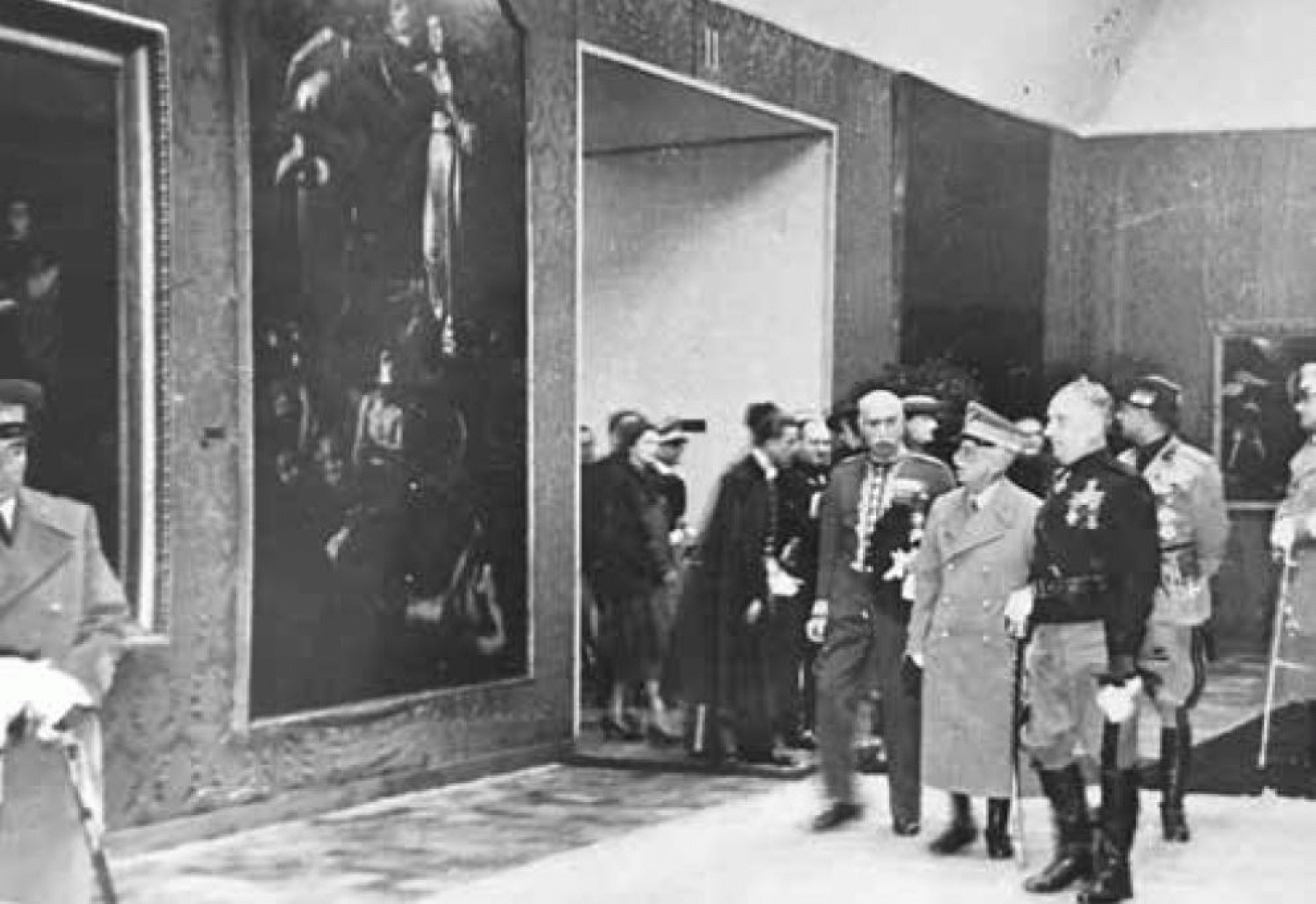Forschung
Ancient Art Exhibitions in Italy between 1877 and 1938 and the Rediscovery of the Seventeenth Century
Giada Policicchio

Vittorio Emanuele III at the Mostra dei tre secoli in Castel Nuovo, 1938, Naples, Archivio dell’Istituto campano per la storia della Resistenza, dell’Antifascismo e dell'Età contemporanea ‘Vera Lombardi’, Picture: Giovanni Aucone
In the present landscape of international Baroque studies and national exhibition activity, this doctoral research aims to recognise and reinterpret the value of seventeenth-century art displayed in exhibitions of ancient art held between the post-Unification period and the Second World War in Italy. The question to be addressed is twofold: the seventeenth century in exhibitions and exhibitions on the seventeenth century. Using approaches from art history, social history and art criticism, the project seeks to understand: how these retrospectives helped to promote greater knowledge and thus a re-evaluation of seventeenth-century art; what value was attributed to the works exhibited by connoisseurs; and how they were received by the public in the context of figurative and historical culture between the nineteenth and twentieth centuries. The research focuses on Neapolitan artists and works of the seventeenth century analysed in the context of the history of ancient art exhibitions from the Esposizione Nazionale di Belle Arti di Napoli of 1877 to the Mostra della Pittura Napoletana del XVII, XVIII, XIX of 1938. These exhibitions had far-reaching national and international resonance in terms of the resurgence of interest in this period, as well as a more local dimension that proved to be fertile ground for many pioneering studies that have become crucial for the writing of Italian art history.


